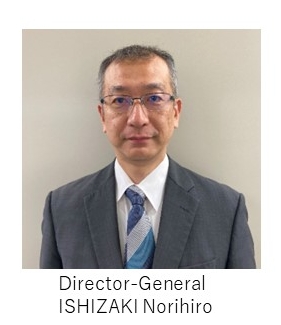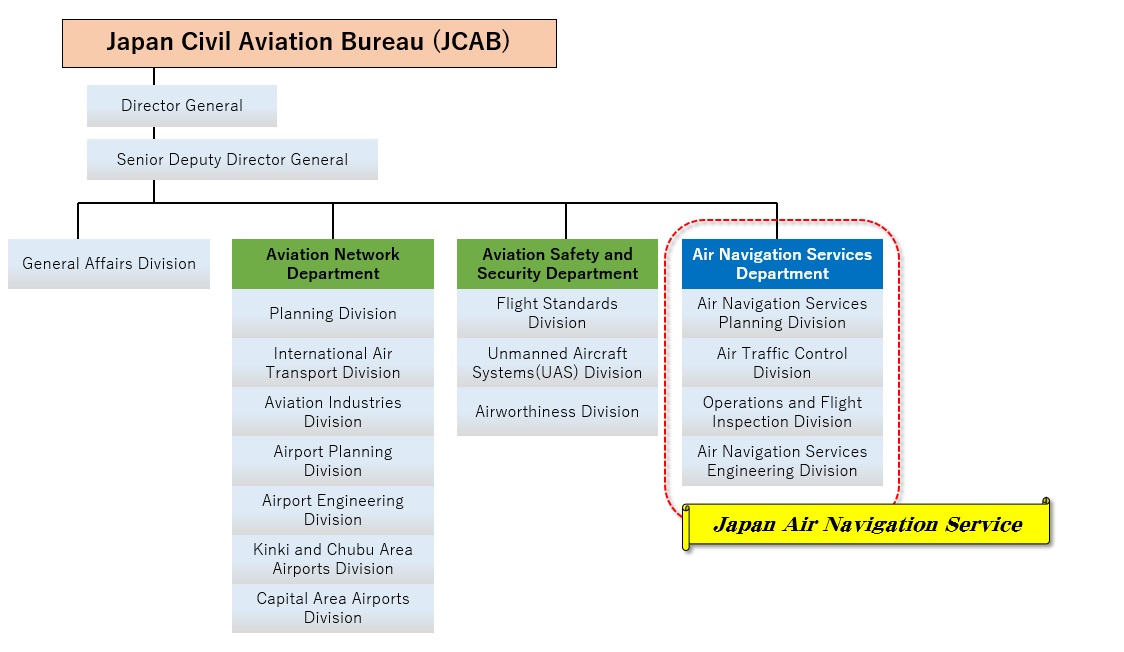Welcome to the Japan Air Navigation Service
 This page introduces the aviation security services provided by Japan.
This page introduces the aviation security services provided by Japan.
Introduction
Aircraft need some external assistance to operate safely and efficiently because they are characterized by following features.
[1] Flying in three-dimensional space adding up and down directions to front/back/left/right.
[2] Moving at high speed and inability to increase or decrease speed to an extreme level or stop in mid-air for safety reasons.
[3] Limited takeoff/landing locations.
[4] Susceptible to various weather condition.
Therefore, Air Navigation Services Department, Japan Civil Aviation Bureau, Ministry of Land, Infrastructure, Transport and Tourism provides ANS (Air Navigation Services) in the airspace known as the Fukuoka FIR (Flight Information Region) where more than 5,000 aircraft fly above Japan every day.
01.Intoroduction(Click to download the PDF file.)
Airports and Air Traffic Control operations
In Japan, we provide the aerodrome control service and the aerodrome flight information service at major airports such as Haneda, Narita, Kansai, Itami, Chubu, New Chitose, Fukuoka, and Naha, as well as at locations throughout Japan from Hokkaido to Okinawa. There are also locations where we provide the aerodrome flight information service (remote).
ANS include not only the aerodrome control service carried out at airports, but also various other services, each of which works organically to ensure safe and efficient air traffic. Approximately 4,000 staff members of the Air Navigation Services Department are engaged in their respective ANS 24 hours a day, 365 days a year at airports and Area Control Center across Japan.
02.Airport and Air Traffic Control operations(Click to download the PDF file.)
Long -term vision for the future “CARATS2040”
Future volume of air passengers will increase mainly in the Asia-Pacific region.
In order to meet the increasing air traffic, it is essential to increase air traffic control capabilities, and in 2010 we formulated formulated and is promoting the Long-term Vision for the Future Air Traffic System called the "Long-term Vision for the Future Air Traffic System (CARATS)." In 2025, the target year of CARATS was extended from 2025 to 2040 and CARATS2040 was published.
03.Long-term vision for the future "CARATS2040"(Click to download the PDF file.)
Efforts to meet the increasing air traffic
As traffic volume increases, more information needs to be processed than ever before, so it is necessary to digitize the information and make it easier to exchange information. In order to support aviation stakeholders in improving their situational awareness and speeding up their decision-making, SWIM(System-Wide Information Management) is scheduled to go into operation in 2025. This system will promote the digitization of information and contribute to the realization of real-time information sharing.
By 2036, we plan to start flexible time management operations according to traffic and weather conditions, around 2040, we aim to start TBO(Trajectory Based Operations) whereby aircraft trajectories are shared in real time by digital technology to air traffic control and aviation stakeholders, and this information is used to optimize control operations.
04.Efforts to meet the increasing air traffic(Click to download the PDF file.)
As an air navigation service provider in Japan, it is essential to strive to maintain safer skies of Japan even in the circumstances where demand for air transportation is increasing.
An overview of ANS is summarized below. Please take a look.
https://www.mlit.go.jp/en/koku/koku_fr13_000016.html

